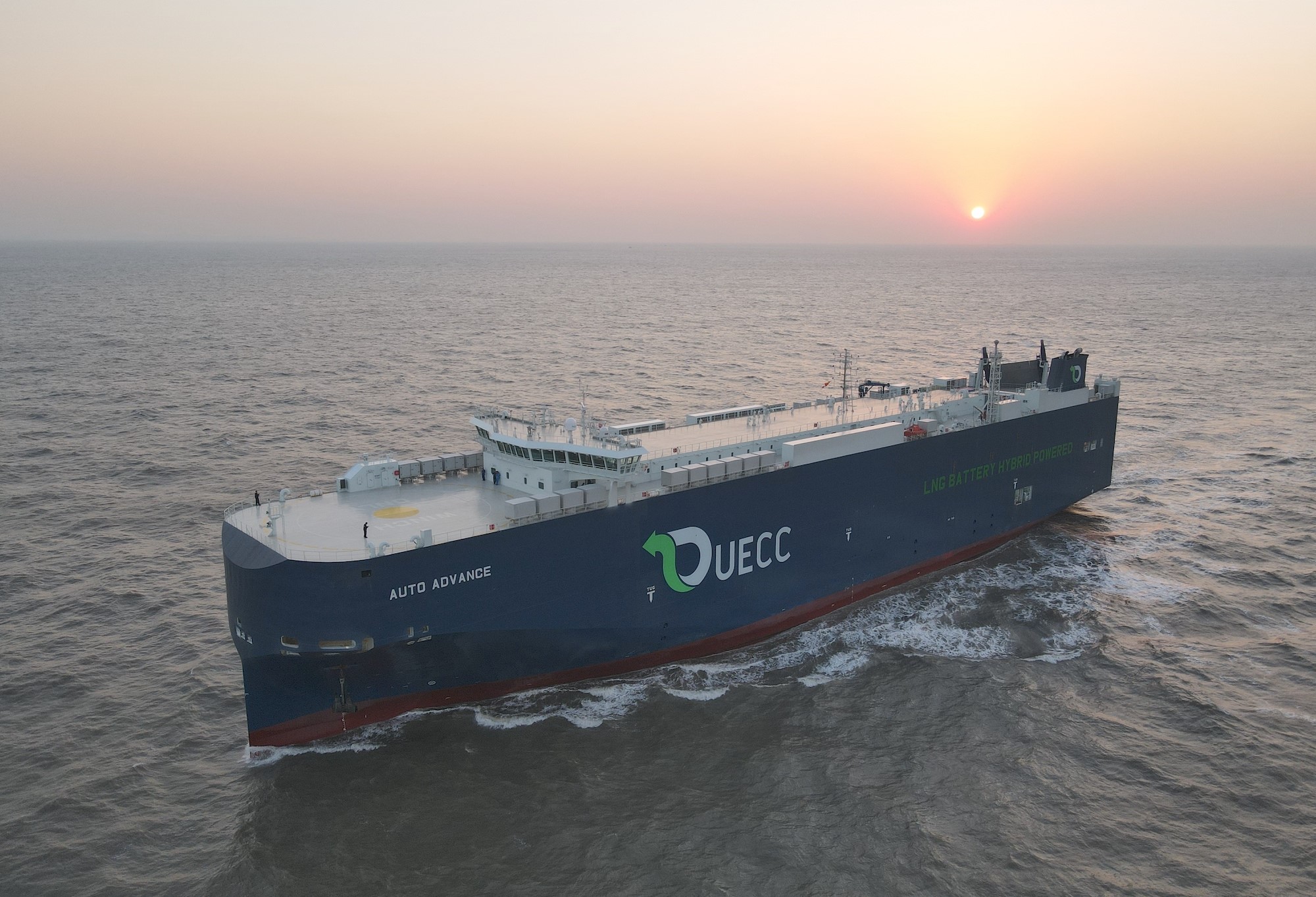Jiangnan Shipyard of CSSC Group built the world’s first dual-fuel LNG battery hybrid Pure Car and Truck Carrier (PCTC). The new ship delivered to Norwegian roll-on/roll-off shipping line UECC.

The new ship, to be named Auto Advance, is set to enter service later this year. Is the first in a series of three newbuild PCTCs – measuring 169 by 28 meters and with capacity for 3600 vehicles on 10 cargo decks. The remaining two are scheduled for delivery in 2022.
“Having brought into operation the first-ever dual-fuel LNG PCTCs five years ago, UECC is now taking delivery of the first of three of the world’s first dual-fuel LNG battery hybrid PCTC to be built. This is another big step forward in eco-friendly ship operations that shows we walk the talk,” says UECC chief executive Glenn Edvardsen.
“This is also a technological milestone as the successful performance of the vessel in sea trials has vindicated our confidence in the viability of this innovative solution.”
On the design, UECC has worked with class society DNV and Jiangnan’s in-house ship designer Shanghai Merchant Ship Design & Research Institute to incorporate proven technology in a new configuration “geared to enhancing operational and environmental performance.”
LNG battery hybrid technology, together with an optimized hull design for better fuel efficiency, will allow the newbuilds to exceed the IMO requirement to cut carbon intensity by 40% from 2008 levels before 2030.
Emissions of carbon dioxide will be reduced by around 25%, SOx and particulate matter by 90% and NOx by 85% from the use of LNG, while the newbuilds will also meet the IMO’s Tier 3 NOx emissions limitations for the North Sea and Baltic Sea, UECC said.
Dual-fuel engine technology has been combined with an energy storage system (ESS), supplied by Finland’s WE Tech, incorporating a battery package from Corvus Energy that will be charged by a permanent magnet, directly driven shaft generator or dual-fueled generators.
The ESS, which will provide power to the main switchboard with a DC link for power distribution, will enable peak shaving for the main engine and auxiliaries to reduce fuel consumption and emissions, with a controllable pitch propeller, bulb rudder and dual-fuel boiler also part of the power system.
These vessels will require only two auxiliary dual-fuel gensets, in addition to the main engine, as the ESS and shaft generator provide a spinning reserve to eliminate the need for another genset that would normally be required, UECC says.
Battery capacity is based on detailed modeling of the vessels’ expected operational profile to economize on installation, with payback time for the ESS estimated at only five years, according to UECC’s head of ship management and newbuilding Jan Thore Foss.
The hybrid solution, which has earned DNV’s Battery Safety notation, will be steered by an “intelligent” energy management system, supplied by Kongsberg Maritime, that will serve as a control system for overall energy production and consumption – essentially the ‘energy brain’ of the vessel, according to UECC.
Batteries can be efficiently charged at sea using the shaft generator so that they are fully charged when entering port, enabling the vessel to maneuver in port using battery power-driven bow thrusters that can also supply the ship’s other energy needs while it is docked.
“This will effectively eliminate emissions while in port and these vessels are also equipped to connect to green power from shore that is becoming increasingly available in order to reduce harmful emissions of NOx, SOx and particulate matter,” Foss says.
All of this is expected to give the vessels an advantage in the European market as EU plans to include shipping in the Emissions Trading System are set to hike costs for vessels.
UECC’s energy and sustainability manager Daniel Gent says: “LNG is presently the most environment-friendly and widely available low-carbon fuel, with an estimated em